The Los Angeles Bakery Keeping Mochi in Temples and Traditions
Brian Kito wants to protect mochi’s status as more than a standard sweet.
Once a year, Japanese Buddhists and followers of the Shinto religion lay an unusual offering on altars in their temples: sculpted sweets most Americans know only as a wrapping for ice cream treats. It’s mochi, a soft pastry made from sweet, glutinous rice flour, and it has been an integral part of religious ceremonies for centuries.
The Japanese strains of Buddhism don’t have many followers in the United States, and Shinto has even fewer, so it’s not easy for mochi makers who follow these traditions in America. But Benkyodo in San Francisco has been in business since 1906, and the oldest, Fugetsu-do in Los Angeles, opened in 1903. That city has always had the largest culturally Japanese population on the American mainland, and the store is within blocks of four Buddhist temples that celebrate the traditional rites.
Brian Kito of Fugetsu-do makes over 100 kinds of mochi, including the kagami mochi that is used for the annual Japanese New Year’s ceremony. This construction of two rounded white discs of mochi topped with a tangerine or orange is meant to symbolize both family ties and the sacred mirror of the sun goddess Amaterasu. (To the uninitiated, it looks a bit like a squashed snowman with an orange head.)
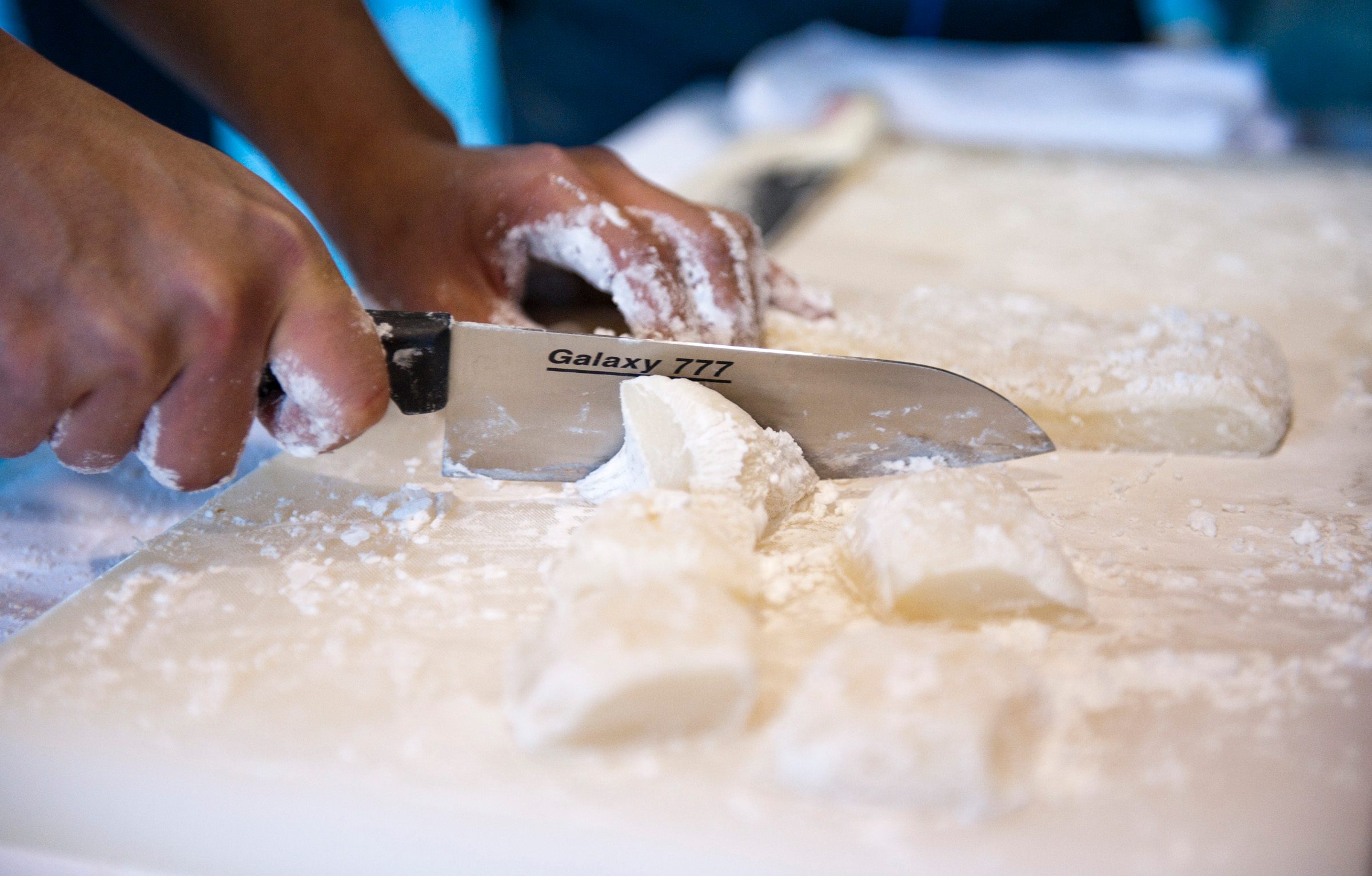

The mochi sculpture is only made for the Japanese New Year celebration, and it sits on the altar for 11 days, developing a hard crust in the process. That crust is broken with a hammer on Kagami Biraki day—literally, breaking the mirror. (It is never cut with a knife, because that would symbolically mean severing a family.) The pieces of mochi are put in a soup called ozoni that is eaten with family as the first important ritual of the new year. It’s a joyous celebration whose origins are obscure, though other religions, including Christianity and Hinduism, have also evolved midwinter celebrations that are celebrated with family meals and sweets.
According to Kito, there is an element of divination in the making and displaying of kagami mochi. “Folklore says that if the two layers stay intact, it will be a good year,” he explains. “But if they crack, it will be a bad year. The year the Great Recession started, in 2008, all the mochi we made cracked significantly.”
There’s a logical basis for this belief, Kito adds. A bad growing year that stresses the crop produces less elastic dough that’s prone to cracks. In that way, cracked mochi predicts the misfortune caused by a bad crop. “Mochi is an economic indicator,” he says.

Kito makes mochi for other ceremonies too, including a version wrapped in oak leaves for Children’s Day and a layered variety for Girl’s Day. Other ceremonial versions are available all year, such as an ornately decorated pastry for Japanese tea ceremonies and a type of bun called manju, which is filled with red bean paste. Though this is a popular everyday snack, it is also given at Japanese funerals. It’s traditional for guests to give money to the family to cover burial expenses, and the buns are exchanged as a way of giving thanks. Unfortunately for artisan mochi makers, many families have shifted to other small gifts such as postage stamps.
The business of making these traditional pastries—in Japan and abroad—has changed as younger generations lose interest in or stop upholding customs like this one, a process Kito has struggled to reverse. For more than 30 years, he taught summer school classes to local children that included mochi-making and other traditional crafts. But he admits that few participants seem inspired to explore their heritage in depth. While mochi remains popular in the Japanese-American community because of its flavor and beauty, most people buy mass market, imported brands that contain preservatives. Those are months old, while the freshly made items from Fugetsu-do have a shelf life of only a few days.
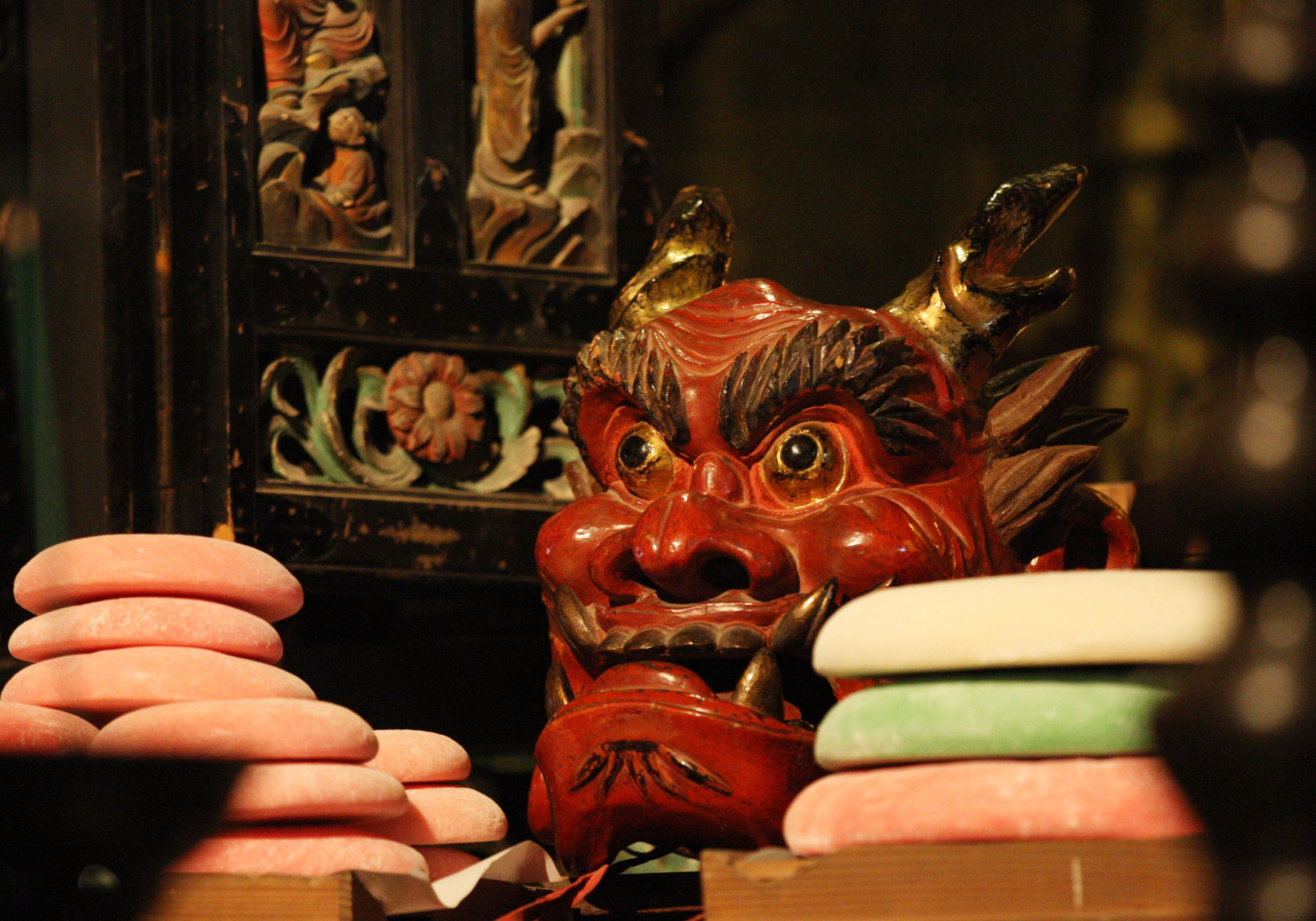
“The older Japanese remember the difference between those products and what we make,” Kito says. “They may still buy the mass market products sometimes, because they’re convenient, but they get ours for special occasions.”
These special occasions include the cherry blossom season, when Fugetsu-do sells mochi wrapped in pickled and salted cherry leaves. But these niches are not enough to maintain a business. So Kito has developed new styles of mochi, including a rainbow version that resembles old fashioned salt water taffy and is made in a similar manner. He’s counting on these varieties to attract a new audience that lacks the cultural connection.
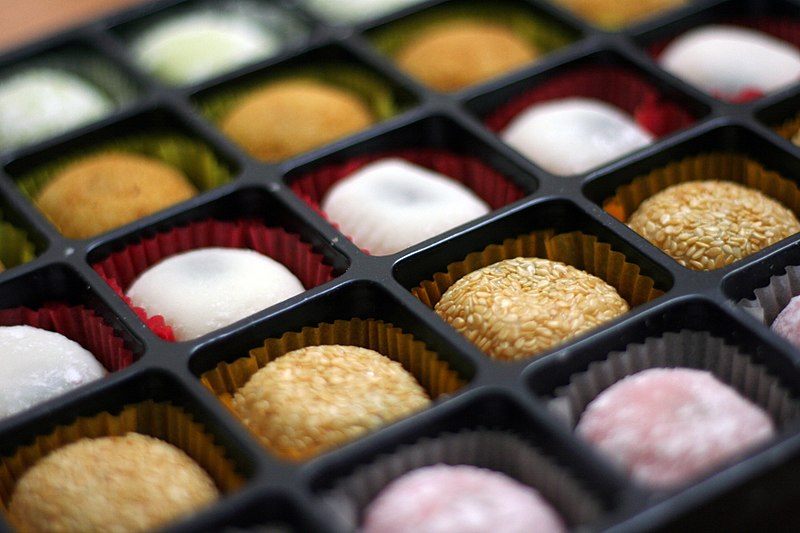
“Mochi is becoming popular with people who have no idea of its place in Japanese culture, and we’re now packaging it like snack food,” says Kito. “If you give non-Japanese people a way to ease themselves into it, after a while they start getting interested in the traditional styles.”
On a recent winter afternoon, the strategy seems to be succeeding. While Kito makes a batch of pancake-wrapped traditional mochi on a griddle older than he is, a crowd of teenagers flows in. They chatter in Japanese, English, and Spanish and peer at the gaily colored treats. The floor beneath their feet is worn, and the finish on the counter has been dulled by a river of pocket change. If even a few of them become interested in the culture behind the sweet, it will help ensure that the mystique of mochi survives into a new generation.
Gastro Obscura covers the world’s most wondrous food and drink.
Sign up for our regular newsletter.



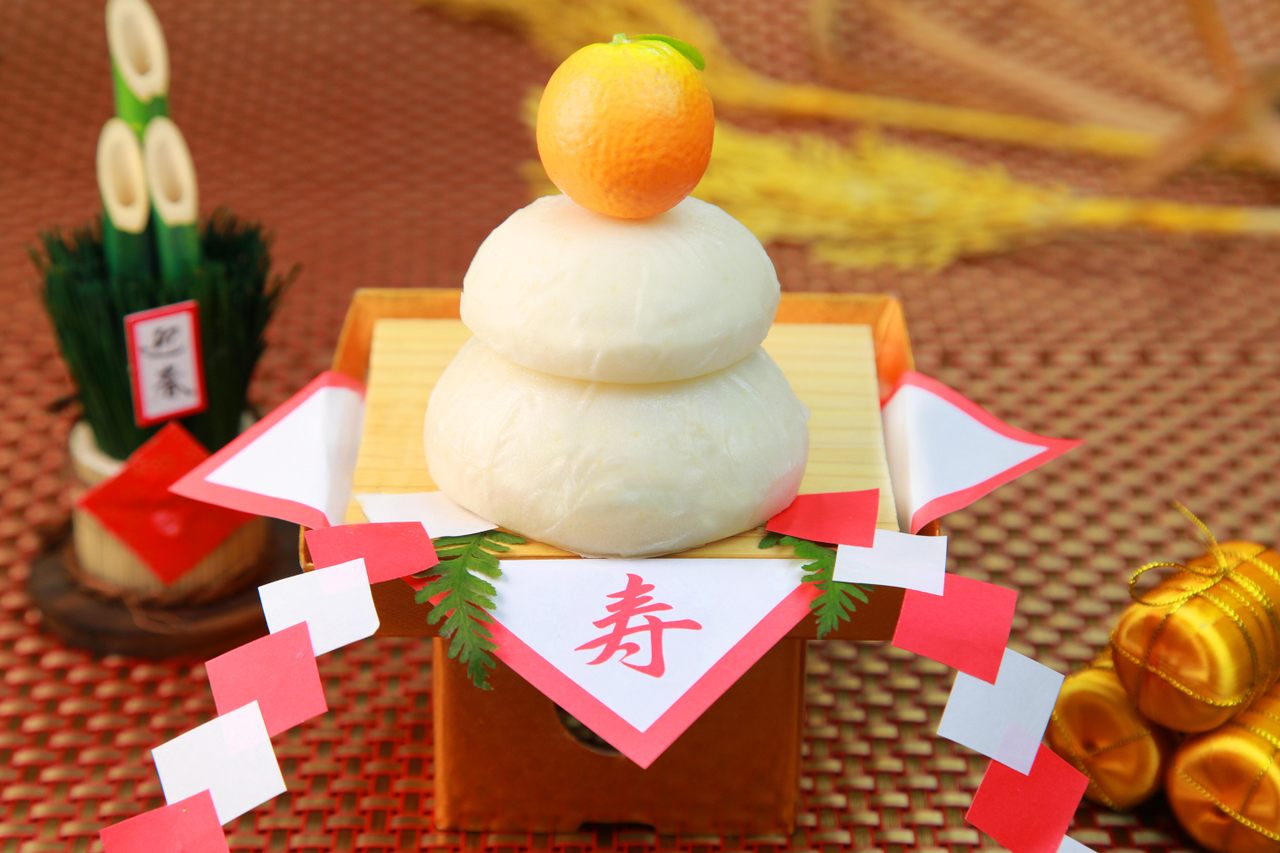






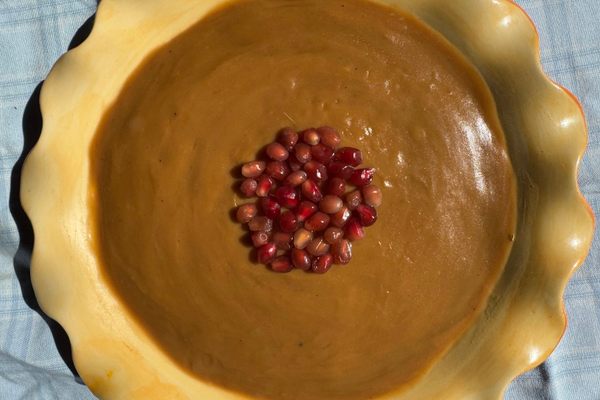





















Follow us on Twitter to get the latest on the world's hidden wonders.
Like us on Facebook to get the latest on the world's hidden wonders.
Follow us on Twitter Like us on Facebook